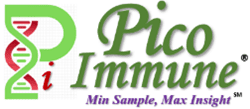TissueScan™ Cancer and Normal Tissue cDNA Arrays
About TissueScan™ Arrays
Comprised of 50 different panels, TissueScan™ Cancer and Normal Tissue cDNA Arrays are developed for different gene expression analysis and validation among hundreds of different human tissues in less than 2 hours. Tissue cDNAs of each array are synthesized from high quality total RNAs of pathologist-verified tissues, normalized and validated with ß-actin in two sequential qPCR analyses. Each sample comes with clinical diagnosis, pathology report, tumor grade, tissue H&E stain images, % of tumor/normal tissue, RNA quality measurements (bioanalyzer results and RT-PCR results).
TissueScan™ Cancer survey array contains over 20 different cancer types from 381 donors and covers almost all major cancers. Normal tissue arrays include major tissues from human, mouse, rat, and Drosophila. In addition, the arrays can be customized: format and specific samples chosen based on the client requirements.
How Does it Work?
Gene specific primers and qPCR master mix are added to the gene array followed by RT-PCR amplification.

Broad Applications
- Biomarker discovery and validation among different cancer types at different stages
- Drug target identification and validation against a specific cancer type
- Cell signaling pathway analysis among different cancer types and stage
Biological Relevance
- One of the most relevant models to understand human cancers
- Clinical information including disease stages and donor's basic demographic
Time and Cost Savings
- Have gene expression results of hundreds of human samples in less than 2 hours
- Avoid tedious time-consuming tissue acquisition and sample preparation processes
- Have custom qPCR-ready tissue cDNA arrays prepared by your gene experts
Array Benefits
- Fast expression data
- Simultaneous examination of a large collection of normal and diseased tissues representing various cancers across several disease progression stages
- Comprehensive pathology report to assist in profound analysis of the gene expression data
- Highly sensitive and quantitative
- Extremely reliable
